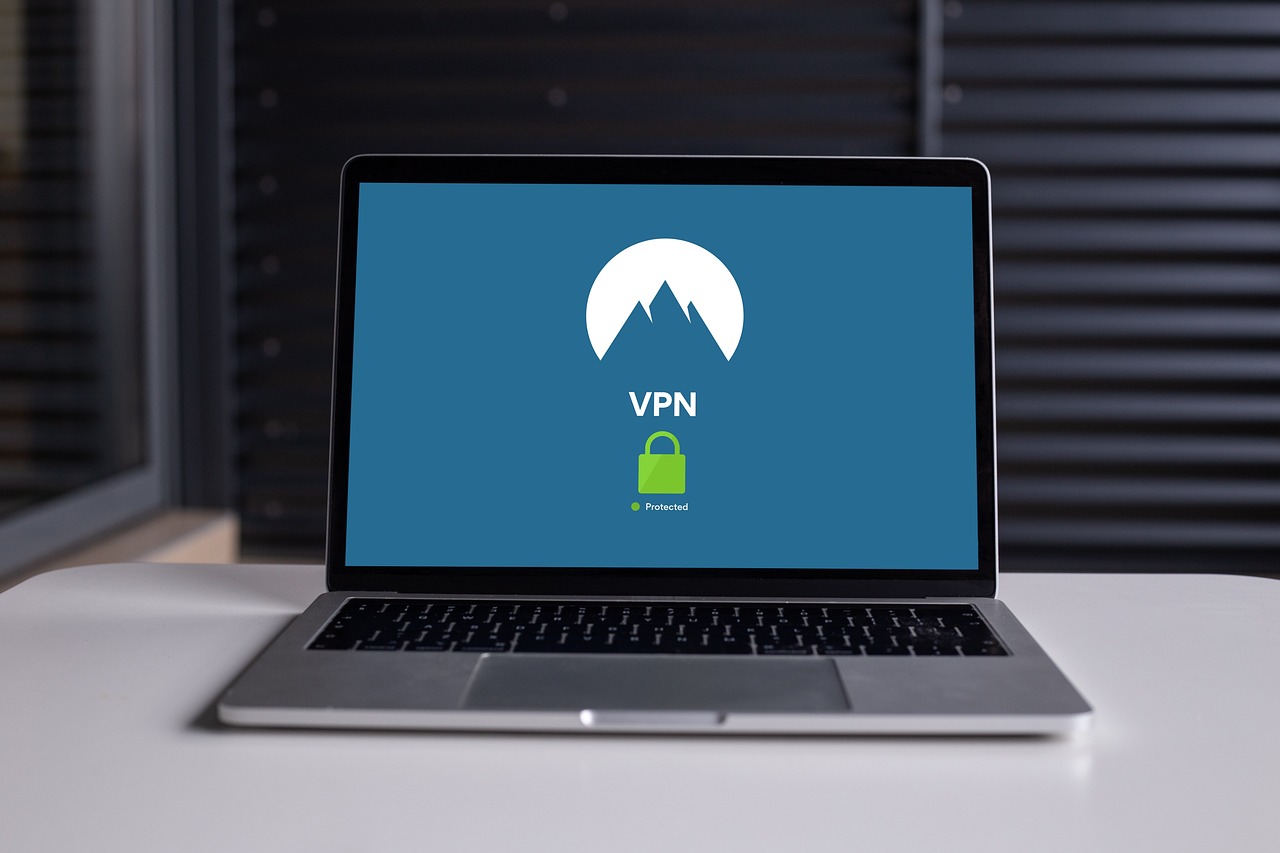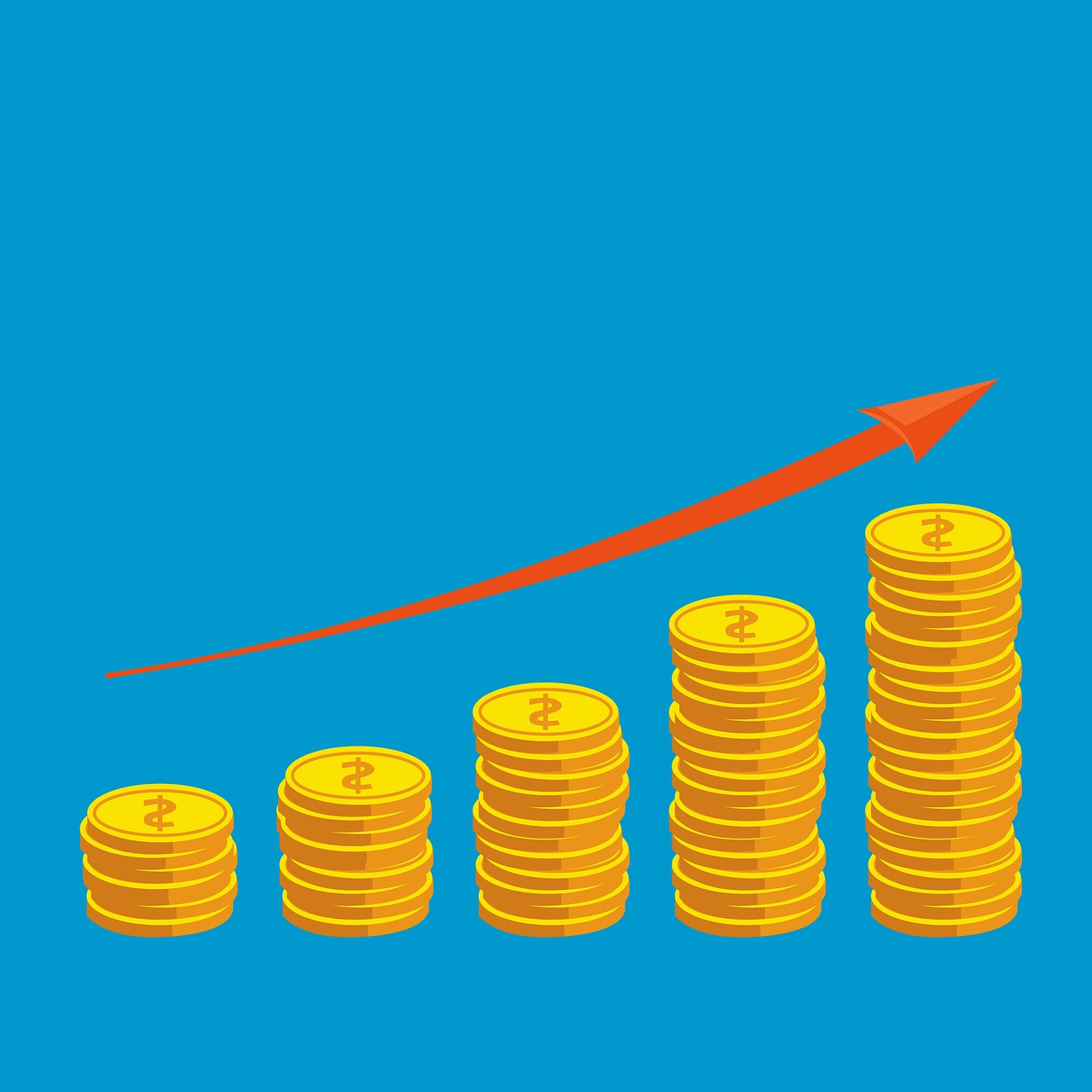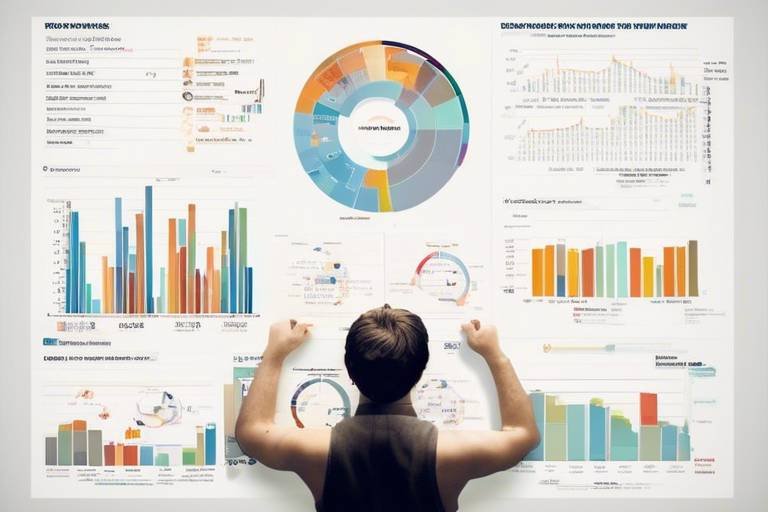Evaluating the Performance of Decentralized Finance Projects
In recent years, Decentralized Finance (DeFi) has emerged as a revolutionary force in the financial landscape, offering innovative solutions that challenge traditional banking systems. As with any burgeoning sector, evaluating the performance of DeFi projects is crucial for investors, developers, and users alike. But how do we measure success in a realm that thrives on decentralization and innovation? This article delves into the key metrics, challenges, and frameworks to assess the viability of DeFi projects effectively. By understanding these elements, stakeholders can gain valuable insights into the potential impact of DeFi on the future of finance.
When it comes to measuring the success of DeFi projects, Key Performance Indicators (KPIs) play a vital role. These metrics help gauge the sustainability and growth of projects, providing a clear picture of their performance. Among the most critical KPIs are:
- Total Value Locked (TVL): This metric indicates the total amount of assets staked in a DeFi protocol, serving as a barometer for its popularity and trustworthiness.
- User Growth: Tracking the increase in users can reveal the project's adoption rate and community engagement.
- Transaction Volume: A higher transaction volume often signifies a robust ecosystem and active user participation.
Understanding these KPIs enables stakeholders to make informed decisions about where to invest their time and resources. After all, in a world brimming with options, knowing what to look for can mean the difference between a wise investment and a costly mistake.
Evaluating the risks associated with DeFi projects is paramount. Unlike traditional finance, DeFi faces unique challenges that can significantly impact investor confidence. For instance, the potential for smart contract vulnerabilities poses a substantial risk. A single line of code can lead to catastrophic failures, making it essential to assess the security measures in place.
Smart contract security is a crucial aspect of any DeFi project. By analyzing protocols for audits and security measures, investors can uncover potential vulnerabilities that may affect performance. Regular code audits are essential for ensuring the integrity of smart contracts. They help identify weaknesses and prevent exploits that could undermine project performance.
Conducting regular code audits is not just a best practice; it's a necessity in the DeFi space. These audits help in identifying vulnerabilities before they can be exploited, providing a safety net for both developers and users. Think of it as a health check for your finances—ensuring everything is in order before a potential crisis strikes.
Insurance mechanisms in DeFi can significantly mitigate risks and enhance user trust. Evaluating these options provides insights into a project's resilience against unforeseen events. By offering insurance, projects can safeguard user investments, creating a more secure environment for all participants.
Market adoption is another critical factor influencing the performance of DeFi projects. Analyzing user engagement and community growth can reveal a project’s long-term viability. The more users a platform attracts, the more robust its ecosystem becomes. It’s like a snowball effect—gaining momentum and growing stronger as more participants join the community.
Conducting a comparative analysis of various DeFi projects allows investors to identify strengths and weaknesses. This process helps in making informed decisions about where to allocate resources. By evaluating multiple projects side-by-side, stakeholders can discern which platforms offer the best potential for growth and sustainability.
Benchmarking DeFi projects against traditional finance systems can highlight their advantages and limitations. For instance, while DeFi offers transparency and accessibility, it may lack the regulatory oversight that traditional systems provide. This comparative analysis offers context for their performance within the broader financial ecosystem, helping investors understand where DeFi stands.
Examining case studies of successful DeFi projects offers valuable lessons and insights into best practices. Projects like Uniswap and Aave have set benchmarks in terms of user engagement and innovation. By analyzing their strategies, other projects can glean insights that inform future development and evaluation, paving the way for greater success in the DeFi landscape.
As the DeFi landscape continues to evolve, exploring future trends in the evaluation of these projects can help stakeholders anticipate changes in the market. For instance, advancements in artificial intelligence and machine learning could lead to more sophisticated risk assessment tools, making it easier to gauge project performance. By staying ahead of the curve, investors can adapt their strategies for optimal performance.
- What is Total Value Locked (TVL) in DeFi?
TVL is the total amount of assets that are locked in a DeFi protocol, indicating its popularity and trustworthiness.
- Why are smart contract audits important?
Audits are crucial for identifying vulnerabilities in smart contracts, ensuring the integrity and security of DeFi projects.
- How can I assess the risks associated with a DeFi project?
Evaluate the project's security measures, user engagement, and market adoption to gauge its risk level.

Key Performance Indicators (KPIs)
When it comes to evaluating the performance of Decentralized Finance (DeFi) projects, understanding the essential is crucial. These metrics serve as the compass guiding investors, developers, and users through the often turbulent waters of the DeFi landscape. Among the most important KPIs are Total Value Locked (TVL), user growth, and transaction volume. Each of these indicators provides a unique insight into a project's health and sustainability.
Total Value Locked (TVL) is perhaps the most widely recognized KPI in the DeFi space. It represents the total amount of assets that are currently locked in a project’s smart contracts. This metric is critical because it reflects the trust and confidence that users have in a platform. A rising TVL signifies increasing user interest and investment, while a declining TVL could indicate potential issues or loss of confidence. For instance, if a DeFi lending platform has a TVL of $1 billion, it suggests that users are actively using the platform to lend and borrow assets, which is a positive sign of its viability.
Another vital KPI is user growth. This metric tracks the number of unique users engaging with a DeFi project over time. A project that consistently attracts new users is likely to have a sustainable future, as it indicates that the platform is providing value and meeting market demand. Conversely, stagnant or declining user growth can raise red flags about a project’s relevance in the ever-evolving DeFi ecosystem. For example, if a DeFi protocol experiences a surge in user registrations after launching a new feature, it may signal that the project is successfully adapting to user needs.
Additionally, transaction volume also plays a significant role in assessing a project's performance. High transaction volumes indicate active engagement and can often correlate with a project's liquidity. In DeFi, liquidity is king; without it, users may struggle to execute trades or withdraw funds efficiently. Therefore, monitoring transaction volumes can provide insights into how well a project is functioning and whether it is meeting the demands of its users.
To sum it up, KPIs like TVL, user growth, and transaction volume are indispensable tools for anyone looking to evaluate the performance of DeFi projects. They not only help in understanding the current state of a project but also serve as predictive indicators for future growth and sustainability. As the DeFi space continues to evolve, keeping an eye on these metrics will be essential for stakeholders aiming to navigate this exciting yet complex financial landscape.
- What is Total Value Locked (TVL)?
TVL refers to the total amount of assets locked in a DeFi project’s smart contracts, indicating user trust and investment. - Why is user growth important?
User growth reflects a project's ability to attract and retain users, which is crucial for its long-term success. - How does transaction volume affect DeFi projects?
High transaction volume indicates active engagement and liquidity, essential for the smooth functioning of DeFi platforms.

Risk Assessment in DeFi
When it comes to Decentralized Finance (DeFi), the excitement is palpable. However, with great opportunity comes great risk. Evaluating the risks associated with DeFi projects is not just a good idea; it's crucial for anyone looking to invest their hard-earned money. Think about it: you're entering a space that's often compared to the Wild West of finance. Just like pioneers faced unknown challenges, DeFi investors must navigate a landscape filled with unique hurdles. From smart contract vulnerabilities to market volatility, understanding these risks can significantly impact your investment decisions.
One of the most pressing concerns in the DeFi space is the security of smart contracts. These self-executing contracts are the backbone of DeFi, automating processes and ensuring transparency. However, if a smart contract has a flaw, it can lead to catastrophic losses. Therefore, analyzing protocols for audits and security measures can illuminate potential vulnerabilities that may affect a project's performance. It’s like checking the brakes before taking a road trip—you wouldn’t want to find out they’re faulty while you’re speeding down the highway!
Smart contract security is paramount in the DeFi ecosystem. The decentralized nature of these projects means that there's often no central authority to turn to in case of an issue. This lack of oversight can make DeFi projects more susceptible to hacks and exploits. Hence, regular code audits are essential for ensuring the integrity of smart contracts. These audits help identify weaknesses and prevent exploits that could undermine project performance. Just like a thorough inspection can reveal hidden issues in a house, audits can uncover flaws in the code before they become serious problems.
Conducting code audits is not just a box-ticking exercise; it’s a vital part of risk management in DeFi. These audits can be performed by third-party firms specializing in blockchain technology, and they often involve a meticulous examination of the codebase to identify vulnerabilities. The results of these audits can either bolster investor confidence or raise red flags. To illustrate, consider the following table that summarizes the audit process:
| Audit Stage | Description |
|---|---|
| Initial Review | A preliminary examination of the code to identify glaring issues. |
| In-Depth Analysis | A comprehensive assessment of the code, focusing on potential exploits. |
| Reporting | Providing a detailed report with findings and recommendations. |
| Follow-Up | Re-assessing the code after vulnerabilities have been addressed. |
Another layer of risk mitigation comes from insurance mechanisms that some DeFi projects offer. These mechanisms can provide a safety net, allowing users to recover funds in case of unforeseen events. Think of it as an insurance policy for your investment; it enhances user trust and can make a significant difference in how a project is perceived. Evaluating these options can provide insights into a project's resilience against unforeseen events, which is crucial for long-term sustainability.
In summary, risk assessment in DeFi is a multifaceted challenge that requires careful consideration of various factors. From smart contract security and code audits to insurance mechanisms, understanding these risks can empower investors to make informed decisions. Just as a sailor checks the weather before setting sail, DeFi investors must assess the risks before diving into this exciting but unpredictable sea of opportunities.
- What are the main risks associated with DeFi projects? The primary risks include smart contract vulnerabilities, market volatility, and lack of regulatory oversight.
- How can I assess the security of a DeFi project? Look for projects that have undergone thorough code audits by reputable firms and check their history for any security breaches.
- Are insurance mechanisms reliable in DeFi? While they can provide an added layer of security, it’s essential to research the specifics of the insurance offered and its track record.
- What should I do if I encounter a vulnerability in a DeFi project? Report it to the project team immediately and follow their guidelines for responsible disclosure.

Smart Contract Security
In the rapidly evolving world of Decentralized Finance (DeFi), stands as a cornerstone for the trust and reliability of these projects. Imagine a smart contract as a digital vending machine: you input your coins, select your item, and expect it to function flawlessly. However, what if that machine had hidden vulnerabilities? Just like a faulty vending machine could lead to lost coins or spoiled goods, a compromised smart contract can result in significant financial loss, affecting not just individual investors but the entire ecosystem.
As DeFi projects rely heavily on smart contracts to automate processes, ensuring their security is not just a technical requirement but a fundamental necessity. Security breaches can lead to devastating consequences, including loss of funds, erosion of user trust, and regulatory scrutiny. Therefore, evaluating a project's approach to smart contract security is crucial for stakeholders aiming to invest wisely in this space.
To assess the security of smart contracts effectively, one must consider several key factors:
- Code Audits: Regular and thorough code audits are essential in identifying vulnerabilities before they can be exploited. These audits often involve third-party firms specializing in security assessments, which can provide an unbiased review of the code.
- Bug Bounty Programs: Many successful DeFi projects implement bug bounty programs, incentivizing ethical hackers to discover and report vulnerabilities. This proactive approach not only helps in identifying weaknesses but also fosters a community of security-conscious developers.
- Security Protocols: The implementation of robust security protocols, such as multi-signature wallets and time locks, can significantly enhance the safety of funds and smart contracts. These measures add layers of protection that are crucial in the event of an attack.
Moreover, it's essential to keep an eye on the project's history. Have there been any previous security incidents? How did the team respond? The answers to these questions can provide valuable insights into the project's resilience and commitment to security.
In the DeFi landscape, where the stakes are high and the pace is frenetic, understanding the intricacies of smart contract security is not just beneficial; it is vital. As investors, developers, and users navigate this complex terrain, prioritizing security measures can be the difference between success and failure. Remember, in the world of DeFi, a secure smart contract is not merely an option; it is a necessity.
- What is a smart contract? A smart contract is a self-executing contract with the terms of the agreement directly written into code, allowing for automated transactions without the need for intermediaries.
- Why is smart contract security important in DeFi? Smart contract security is crucial in DeFi because vulnerabilities can lead to significant financial losses and can undermine user trust in the entire ecosystem.
- How can I assess the security of a DeFi project? You can assess the security of a DeFi project by reviewing their code audits, checking for bug bounty programs, and evaluating their security protocols.
- What are code audits? Code audits are thorough reviews of the smart contract code conducted by security experts to identify vulnerabilities and ensure the integrity of the contract.

Code Audits
When it comes to the world of decentralized finance (DeFi), the importance of cannot be overstated. These audits serve as a critical line of defense against potential vulnerabilities that could jeopardize both the integrity of a project and the assets of its users. Think of a code audit as a comprehensive health check-up for a DeFi project’s smart contracts. Just like how a doctor examines a patient to identify any underlying issues, a code audit meticulously reviews the code to uncover flaws that could be exploited by malicious actors.
In the fast-paced and often unpredictable realm of DeFi, where millions of dollars can be at stake, having a robust auditing process in place is essential. A thorough audit typically involves a few key stages:
- Static Analysis: Automated tools scan the code for common vulnerabilities and coding errors.
- Manual Review: Experienced auditors examine the code line by line to identify logic flaws and security loopholes.
- Testing: Simulations are run to see how the code behaves under various conditions, ensuring it performs as intended.
Moreover, the results of these audits can significantly influence user confidence and project reputation. A project that has undergone a rigorous audit is often viewed as more trustworthy and reliable compared to those that haven't. This trust can translate into increased user adoption, higher Total Value Locked (TVL), and ultimately, a more sustainable project. However, it’s important to remember that a code audit is not a one-time affair. Just as our health can change, so can the security landscape of a DeFi project. Regular audits are essential to adapt to new threats and vulnerabilities that may arise over time.
To illustrate the importance of code audits, let’s take a look at some notable incidents in the DeFi space where the lack of proper auditing led to catastrophic losses:
| Project Name | Incident | Losses Incurred |
|---|---|---|
| Compound | Flash Loan Exploit | $90 million |
| Pickle Finance | Reentrancy Attack | $20 million |
| Alpha Homora | Flash Loan Attack | $37 million |
These incidents serve as stark reminders of the potential risks involved in DeFi projects. By prioritizing code audits, developers not only safeguard their projects but also contribute to the overall health of the DeFi ecosystem. In the end, a well-audited project can stand out in a crowded market, attracting users who are looking for safety and reliability amidst the chaos of the crypto world.

Insurance Mechanisms
In the ever-evolving landscape of decentralized finance (DeFi), have emerged as a crucial component for enhancing user trust and mitigating risks. Just like how traditional insurance provides a safety net for individuals and businesses, DeFi insurance aims to protect users from unforeseen events that could jeopardize their investments. Imagine you’ve just bought a shiny new car; you wouldn't drive it off the lot without insurance, right? Similarly, in the world of DeFi, having a safety net can make all the difference in ensuring peace of mind.
DeFi insurance works by covering specific risks associated with smart contracts, hacks, and other vulnerabilities. When users invest in a project, they often face the fear of losing their funds due to unforeseen circumstances. This is where insurance mechanisms come into play, providing a layer of protection that can significantly enhance user confidence. For instance, if a protocol suffers a hack, users with insurance can recover some or all of their lost funds, making the investment feel less risky. This not only fosters a sense of security but also encourages more users to participate in DeFi projects.
There are various types of insurance products available in the DeFi space, including:
- Smart Contract Insurance: This type of insurance covers losses incurred due to bugs or vulnerabilities in smart contracts.
- Protocol Insurance: This offers coverage against the failure of a specific DeFi protocol, ensuring that users can recover their investments.
- Custodial Insurance: This protects users against losses related to custodial services, which are often used to manage assets in a decentralized manner.
To better understand how these insurance mechanisms operate, let's take a look at a simple table that outlines some popular DeFi insurance protocols and their features:
| Insurance Protocol | Coverage Type | Key Features |
|---|---|---|
| Cover Protocol | Smart Contract Insurance | User-friendly interface, customizable coverage, and community-driven claims process. |
| Nexus Mutual | Protocol Insurance | Decentralized claims assessment, strong community involvement, and flexible coverage options. |
| Etherisc | Custodial Insurance | Focus on real-world applications, transparent pricing, and automated claims processing. |
As the DeFi ecosystem continues to grow, the importance of insurance mechanisms cannot be overstated. They not only provide a safety net for investors but also enhance the overall credibility of DeFi projects. By integrating robust insurance solutions, projects can attract more users, thereby increasing their Total Value Locked (TVL) and fostering a healthier financial environment. In a way, these mechanisms act as a lighthouse guiding users through the often turbulent waters of decentralized finance, illuminating the path towards safer investment practices.
In conclusion, as we navigate this exciting yet unpredictable terrain of DeFi, insurance mechanisms stand out as a vital tool for risk management. They empower users to engage with DeFi projects with greater confidence, knowing that their investments are safeguarded against potential pitfalls. As more projects adopt these mechanisms, we can expect to see a more resilient DeFi landscape, where innovation thrives alongside security.
- What are DeFi insurance mechanisms? DeFi insurance mechanisms are products designed to protect users against losses due to smart contract failures, hacks, or other unforeseen events in the decentralized finance space.
- How do I choose the right insurance for my DeFi investments? It's essential to assess the type of coverage you need, the reputation of the insurance provider, and the specific risks associated with the DeFi projects you are investing in.
- Are DeFi insurance products worth the cost? While there is a cost associated with insurance, the potential protection against significant losses can make it a worthwhile investment, especially for larger sums of capital.

Market Adoption
When it comes to the world of decentralized finance, is like the lifeblood that keeps the system thriving. Without a strong user base and community engagement, even the most innovative DeFi projects can falter. So, what exactly does market adoption entail? It's not just about the number of users; it's about how those users interact with the platform, the volume of transactions, and the overall sentiment within the community. Think of it as a bustling marketplace where the more people you have participating, the more vibrant and successful the environment becomes.
To truly gauge market adoption, we need to look at several key metrics. These include:
- User Growth: Tracking the increase in unique users over time can provide insights into a project's popularity and usability.
- Transaction Volume: The total number of transactions conducted on the platform indicates how actively users are engaging with the services offered.
- Community Engagement: Metrics such as social media interactions, forum discussions, and governance participation reflect the community's commitment to the project.
For example, if a DeFi platform sees a steady increase in user growth and high transaction volumes, it is a strong indicator that the project is resonating with its audience. On the flip side, a decline in these metrics might raise red flags about the project’s sustainability and future prospects.
Moreover, community sentiment plays a crucial role in market adoption. Platforms that foster open communication and transparency often enjoy higher levels of trust and loyalty from their users. Engaging with the community through regular updates, AMAs (Ask Me Anything sessions), and feedback loops can significantly enhance user retention and attract new participants.
In essence, market adoption is not just a number; it’s a reflection of a project's health and viability. If we visualize it as a garden, the more care and attention you give it—through community engagement, user support, and robust features—the more it flourishes. As stakeholders in the DeFi space, understanding these aspects of market adoption can help investors and developers alike make informed decisions about where to focus their efforts and resources.
Q1: Why is market adoption crucial for DeFi projects?
Market adoption indicates the project's user engagement and overall health. High adoption rates suggest that users find value in the services offered, which is essential for long-term sustainability.
Q2: What metrics should I monitor to assess market adoption?
Key metrics include user growth, transaction volume, and community engagement. Monitoring these can provide a clear picture of how well the project is performing in the market.
Q3: How can community sentiment affect market adoption?
Positive community sentiment can lead to increased user trust and loyalty, which in turn boosts market adoption. Engaging with users and addressing their concerns can enhance this sentiment.

Comparative Analysis of DeFi Projects
When diving into the world of Decentralized Finance (DeFi), it’s essential to conduct a comparative analysis of various projects to make informed investment decisions. With thousands of projects vying for attention, how do you sift through the noise? The answer lies in evaluating their strengths and weaknesses through key metrics and qualitative factors. By comparing different DeFi platforms, you can uncover which projects hold the most promise and which may be riding on hype alone.
One of the first steps in this analysis is to look at the Total Value Locked (TVL) in each project. TVL is a crucial metric that indicates the amount of assets locked into a DeFi protocol. A higher TVL often signifies greater trust and usage among investors. However, it’s important to remember that TVL alone doesn’t tell the whole story. For instance, a project might have a high TVL but could be plagued by low user engagement or high fees, which can deter long-term sustainability.
Next, consider the user growth rate. An influx of new users can indicate a project’s increasing popularity and utility. However, it’s equally important to analyze user retention. Are users sticking around, or is there a high churn rate? This can be assessed by looking at metrics such as daily active users (DAU) and monthly active users (MAU). A project with a solid user base and low churn is likely to have a more sustainable future.
Another vital aspect to consider is the community engagement. Projects that foster a strong community can often weather market fluctuations better than those without. Take a look at social media presence, community forums, and governance participation. A project with active community involvement can adapt more quickly to changes and challenges, making it a more resilient option.
To further enrich your comparative analysis, consider creating a
| Project Name | Total Value Locked (TVL) | User Growth Rate | Community Engagement Score |
|---|---|---|---|
| Project A | $500M | 20% | High |
| Project B | $300M | 15% | Medium |
| Project C | $1B | 30% | Very High |
In this table, you can easily visualize how different projects stack up against one another. It’s a simple yet effective way to highlight disparities and opportunities. Remember, while quantitative metrics are important, qualitative factors like team experience and project transparency should also weigh heavily in your analysis. Projects led by experienced teams with a clear vision and transparent practices tend to perform better over time.
Lastly, a comparative analysis isn’t just about finding the best project; it’s also about understanding the market context. How do these DeFi projects compare to traditional finance solutions? Are they offering something unique that traditional systems can’t? By benchmarking against established financial models, you can better appreciate the innovations and potential disruptions that DeFi projects bring to the table.
- What are the key metrics to evaluate DeFi projects? The key metrics include Total Value Locked (TVL), user growth rate, community engagement, and project transparency.
- How do I determine the risks associated with DeFi projects? Assess risks by evaluating smart contract security, market volatility, and the presence of insurance mechanisms.
- Is high TVL always a good sign? Not necessarily. While high TVL indicates trust, it should be analyzed alongside user retention and engagement metrics.

Benchmarking Against Traditional Finance
When we talk about benchmarking DeFi projects against traditional finance, it’s like comparing apples to oranges. While both systems aim to provide financial services, they operate on fundamentally different principles. Traditional finance (TradFi) is characterized by centralized institutions, regulatory frameworks, and established trust mechanisms. In contrast, DeFi thrives on decentralization, transparency, and community governance. This juxtaposition opens the door to a wealth of insights for investors and stakeholders alike.
One of the key metrics to consider in this comparison is transaction speed. In traditional finance, transactions can take days, especially when it involves cross-border payments. DeFi projects, on the other hand, often facilitate transactions in seconds or minutes, thanks to blockchain technology. This rapid processing can greatly enhance liquidity and efficiency, making DeFi an attractive alternative for many users. However, this speed comes with its own set of challenges, such as network congestion during peak times, which can slow down transactions.
Another crucial factor is cost efficiency. Traditional finance typically involves various fees—think of bank charges, wire transfer fees, and currency conversion costs. DeFi projects often promise lower costs due to their lack of intermediaries. However, users must be cautious about hidden fees in the form of gas fees on blockchain networks, which can sometimes be exorbitant during high-demand periods. A detailed analysis of the fee structures can help users make informed decisions about which system best meets their financial needs.
Moreover, the regulatory landscape is a significant point of divergence. Traditional finance operates under strict regulations designed to protect consumers and ensure market integrity. In contrast, the DeFi space is still navigating the murky waters of regulation, which can lead to uncertainty. For example, while a DeFi protocol may offer users high returns, the lack of regulatory oversight might expose them to risks that traditional finance has mitigated over decades.
To illustrate these differences more effectively, let’s take a look at a comparative table:
| Aspect | Traditional Finance | Decentralized Finance |
|---|---|---|
| Transaction Speed | Days (especially for cross-border) | Seconds to minutes |
| Cost of Transactions | High (various fees) | Variable (often lower, but gas fees can be high) |
| Regulatory Oversight | Strong and established | Limited and evolving |
| Access to Services | Restricted by geography and credit history | Open to anyone with internet access |
In conclusion, benchmarking DeFi against traditional finance offers a fascinating glimpse into the future of financial services. It reveals the strengths and weaknesses of both systems, allowing users to make choices that align with their financial goals. While DeFi presents a promising alternative with its speed and cost efficiency, the lessons learned from traditional finance regarding regulation and consumer protection cannot be overlooked. As the DeFi landscape continues to evolve, understanding these comparisons will be crucial for anyone looking to navigate this exciting new frontier.
- What are the main advantages of DeFi over traditional finance? DeFi offers faster transaction times, lower fees, and greater accessibility for users worldwide.
- Are DeFi projects safe? While many DeFi projects implement security measures, they are still subject to risks such as smart contract vulnerabilities and market volatility.
- How can I evaluate a DeFi project? Look for key performance indicators (KPIs), assess smart contract audits, and analyze market adoption and user engagement.
- Will traditional finance adopt DeFi practices? It’s likely that traditional finance will integrate some DeFi principles, such as blockchain technology and smart contracts, to enhance efficiency.

Case Studies of Successful Projects
When diving into the world of decentralized finance (DeFi), it’s essential to look at real-world examples that showcase how these projects have not only survived but thrived in a competitive landscape. One standout case is Uniswap, a decentralized exchange that has revolutionized trading by allowing users to swap tokens directly from their wallets without the need for an intermediary. Uniswap’s innovative automated market-making (AMM) model has enabled it to achieve a staggering Total Value Locked (TVL) of over $10 billion, demonstrating the trust and reliance users have placed in the platform.
Another compelling example is Aave, a decentralized lending protocol that allows users to lend and borrow a wide range of cryptocurrencies. Aave’s unique features, such as flash loans and aTokens, have attracted a diverse user base, leading to significant growth in user engagement. As of now, Aave boasts a TVL exceeding $5 billion, showcasing its robust position in the DeFi ecosystem. The success of Aave can be attributed to its focus on user experience and security, which are critical in building trust within the community.
Moreover, let’s not overlook Yearn Finance, a yield aggregator that automates the process of finding the best yields across various DeFi platforms. Yearn Finance has captured attention for its innovative approach to yield farming, allowing users to maximize their returns effortlessly. With a TVL that has fluctuated around $3 billion, Yearn has proven that simplifying complex processes can lead to widespread adoption. The project’s success is a testament to the importance of user-centric design in DeFi.
To further illustrate the impact of these projects, let’s take a look at a
| Project | Total Value Locked (TVL) | Unique Features |
|---|---|---|
| Uniswap | $10 Billion | Automated Market Making |
| Aave | $5 Billion | Flash Loans, aTokens |
| Yearn Finance | $3 Billion | Yield Aggregation |
These case studies not only highlight the individual successes of each project but also reflect broader trends within the DeFi space. For instance, the emphasis on security and user experience has become a common thread among successful projects. Investors and users alike are increasingly prioritizing platforms that demonstrate a commitment to these principles.
In conclusion, examining the journeys of successful DeFi projects like Uniswap, Aave, and Yearn Finance provides valuable insights into the elements that contribute to a project's sustainability and success. By understanding what has worked for these platforms, stakeholders can better evaluate new projects and anticipate their potential impact on the financial landscape.
- What are the key metrics to evaluate DeFi projects? Key metrics include Total Value Locked (TVL), user growth, and transaction volume.
- How do I assess the risks associated with DeFi projects? Evaluate smart contract security, market volatility, and the presence of insurance mechanisms.
- Why is market adoption important for DeFi projects? Market adoption indicates user trust and the long-term viability of a project.
- What can we learn from successful DeFi projects? Successful projects often prioritize security, user experience, and innovative features.

Future Trends in DeFi Evaluation
The world of Decentralized Finance (DeFi) is evolving at a breakneck speed, and with it, the methods we use to evaluate its projects are also undergoing significant transformations. As we look ahead, several key trends are emerging that will shape how stakeholders assess the viability and sustainability of DeFi initiatives. One of the most notable shifts is the increasing reliance on data analytics and machine learning to provide deeper insights into project performance. With vast amounts of data generated daily, leveraging advanced analytics tools will allow investors to make more informed decisions based on real-time metrics.
Moreover, the integration of decentralized identity solutions is set to revolutionize user verification and trust in DeFi platforms. By ensuring that users can maintain their privacy while still proving their identity, projects can attract a broader audience. This shift towards more secure and user-friendly identity management will likely enhance user engagement and retention, critical factors in assessing a project's long-term success.
Another trend to watch is the rise of cross-chain compatibility. As more DeFi projects emerge on different blockchains, the ability to assess their performance across various platforms will become essential. This interoperability will allow users to move assets seamlessly, thereby increasing liquidity and engagement. Evaluators will need to develop frameworks that can account for these cross-chain interactions, which will add layers of complexity to performance assessments.
Furthermore, the concept of social tokens and community-driven governance is gaining traction. Projects that empower their communities to participate in decision-making processes will likely see enhanced loyalty and user commitment. Evaluating how well a project integrates community feedback and governance will become a vital metric for assessing its sustainability. This shift towards community-centric models may also lead to the development of new KPIs that focus on community engagement and satisfaction.
To add to this, the importance of regulatory compliance will increase as governments around the world begin to take a closer look at DeFi. Projects that proactively embrace compliance measures will not only mitigate risks but also enhance their credibility in the eyes of investors. Consequently, evaluators will need to incorporate compliance metrics into their assessments, looking at how well projects adhere to existing and emerging regulations.
Lastly, as the DeFi space matures, the focus on environmental sustainability will become more pronounced. Projects that demonstrate a commitment to reducing their carbon footprint and promoting eco-friendly practices will likely attract more investors who are conscious of their environmental impact. Evaluating the sustainability practices of DeFi projects will become an essential part of performance assessments, aligning with the global push towards greener financial solutions.
- What are the key metrics to evaluate DeFi projects?
Key metrics include Total Value Locked (TVL), user growth, transaction volume, and community engagement rates.
- How can I assess the risks associated with a DeFi project?
Evaluate smart contract audits, market volatility, and the presence of insurance mechanisms to understand potential risks.
- Why is community governance important in DeFi?
Community governance fosters user engagement and loyalty, which are crucial for the long-term success of DeFi projects.
- What role does regulatory compliance play in DeFi?
Compliance with regulations enhances project credibility and reduces risks associated with legal challenges.
Frequently Asked Questions
- What are the key performance indicators (KPIs) for DeFi projects?
Key performance indicators (KPIs) for DeFi projects include metrics like Total Value Locked (TVL), user growth, transaction volume, and liquidity. These metrics help stakeholders assess the project's success and sustainability over time.
- How can I assess the risks associated with DeFi projects?
Assessing risks in DeFi projects involves evaluating smart contract security, market volatility, and potential regulatory challenges. It's essential to look at factors like code audits, insurance mechanisms, and the project's overall community engagement to gauge its resilience.
- Why are smart contract audits important?
Smart contract audits are crucial because they help identify vulnerabilities and weaknesses in the code before they can be exploited. Regular audits enhance the integrity of the project and protect users' investments, ensuring a safer DeFi environment.
- What role do insurance mechanisms play in DeFi?
Insurance mechanisms in DeFi provide a safety net for users against unforeseen events, such as hacks or smart contract failures. They enhance user trust and can significantly improve a project's attractiveness by mitigating potential risks.
- How can I evaluate market adoption of a DeFi project?
To evaluate market adoption, you can analyze user engagement metrics such as active wallets, transaction frequency, and community growth on social media platforms. These indicators help determine the project's long-term viability and user interest.
- What is the importance of comparative analysis in DeFi?
Comparative analysis allows investors to identify the strengths and weaknesses of various DeFi projects. By benchmarking against traditional finance and examining successful case studies, stakeholders can make informed decisions about where to allocate their resources.
- What future trends should I be aware of in DeFi evaluation?
Future trends in DeFi evaluation may include the integration of advanced analytics, improved regulatory frameworks, and the emergence of new performance metrics. Staying updated on these trends can help stakeholders adapt their strategies for optimal performance.



















